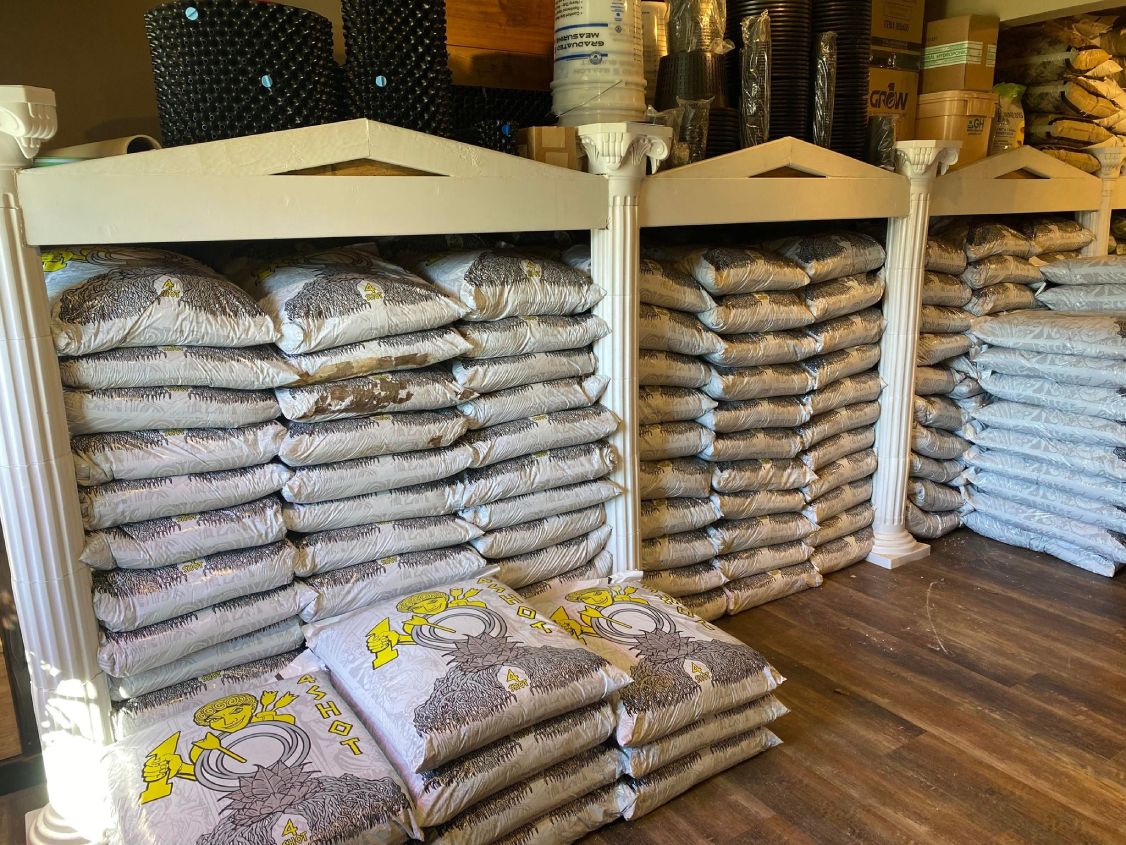Reinvent Your Garden with The Indoor Earthworm's Growing Technique
Reinvent Your Garden with The Indoor Earthworm's Growing Technique
Blog Article
Harnessing the Power of Hydroponics: a Deep Study Utilizes and Different Kinds
In the world of contemporary farming, hydroponics has actually arised as an approach that tests traditional farming methods by using a water-efficient and space-saving alternative. The usage of hydroponic systems opens up a world of opportunities for cultivating plants in varied settings, ultimately affecting food manufacturing and sustainability. As we browse via the elaborate landscape of hydroponics, discovering its different types and applications, a deeper understanding of its potential to transform farming methods and address international food safety worries begins to unfold.
Advantages of Hydroponic Farming
Undoubtedly, the advantages of hydroponic farming are coming to be increasingly identified in contemporary agricultural methods. Hydroponic farming supplies various benefits over traditional soil-based farming. Among the key advantages is water efficiency; hydroponic systems consume to 90% much less water contrasted to standard farming methods. This reduction in water usage is important in combating water deficiency problems globally.
In addition, hydroponic farming permits better control over nutrient levels, causing faster plant development and greater yields. By offering necessary nutrients directly to the plant roots, hydroponic systems advertise healthier and a lot more durable plant growth. Furthermore, the controlled setting of hydroponic systems minimizes the danger of parasites and conditions, decreasing the need for hazardous chemicals and herbicides.

Common Types of Hydroponic Equipments
Offered the various benefits of hydroponic farming, it is necessary to check out the different typical types of hydroponic systems utilized in modern-day farming. One prevalent type is the Deep Water Society (DWC) system, where plant roots are submerged in a nutrient solution. One more common system is Nutrient Movie Strategy (NFT), which entails a thin movie of nutrient-rich water moving over the roots - The Indoor Earthworm. The Ebb and Circulation system, likewise called Flooding and Drainpipe, regularly floods the plant roots with nutrient option prior to draining it. Aeroponics stands out for its approach of suspending plant roots in the air and misting them with a nutrient service. Drip systems provide a managed quantity of nutrient solution directly to the plant's base. Wick systems, the most basic type of hydroponics, use a wick to passively supply vitamins and mineral option to the plant roots. Each of these systems provides and supplies unique benefits to different plant types and growth stages in hydroponic farming.
Nutrient Movie Strategy (NFT) System

One of the key benefits of the NFT system is its water performance. The Indoor Earthworm. Considering that the nutrient option is recirculated in a shut system, this technique utilizes considerably much less water contrasted to standard soil farming. Additionally, the NFT system is space-efficient, making it perfect for indoor farming or in locations with restricted room for typical agriculture
However, the NFT system needs mindful surveillance and upkeep to make certain the continuous flow of water and nutrients. Any kind of disturbance in the circulation can swiftly impact plant health and wellness. On the whole, the NFT system uses a sustainable and effective way to expand plants hydroponically, particularly for crops that prosper in well-oxygenated origin settings.
Deep Water Society (DWC) System
Relocating from the Nutrient Film Strategy (NFT) system, the Deep Water Culture (DWC) system is a hydroponic method that involves suspending plant origins straight in a nutrient option. Unlike NFT, where origins are continually subjected to a slim film of nutrient option, DWC plants have their roots submerged in a tank filled up with oxygenated nutrition water. The origins dangle basics in the nutrient solution, permitting straight uptake of water and essential nutrients.
One of the key benefits of the DWC system is its simplicity and reduced upkeep requirements. The constant accessibility to oxygen and nutrients advertises fast growth and higher returns. DWC systems require adequate aeration to avoid origin rot and guarantee ideal nutrient absorption. Routine monitoring of pH levels and nutrient focus is vital to prevent discrepancies that might harm plant health and wellness.
Aeroponic System
An ingenious approach in hydroponics farming, the Aeroponic System makes use of a misting or fogging system to deliver nutrients straight to plant origins put on hold in the air. This system is known for its capacity to promote fast development and effective nutrient uptake because of the straight delivery of nutrients to the roots, allowing the plant to concentrate its power on growth instead of looking for nutrients. In an aeroponic configuration, plants are typically housed in a shut setting where the origins are intermittently misted with a nutrient service. This misting cycle ensures that the roots obtain ample oxygen, promoting healthy root growth and general plant growth.
One of the essential advantages of aeroponics is its water efficiency, as the system uses dramatically less water compared to traditional soil-based growing techniques. Additionally, the precise delivery of nutrients straight to the roots can result in higher yields and faster growth rates. While aeroponics can be a lot more complex to establish and keep compared to various other hydroponic systems, its capacity for raised plant development and effectiveness makes it a popular choice for hydroponic enthusiasts and business cultivators looking for optimum outcomes.
Final Thought
Finally, hydroponic farming provides countless benefits and numerous kinds of systems to select from. The Nutrient Movie Method (NFT) system, Deep Water Society (DWC) system, and Aeroponic system are amongst the most common techniques made use of in hydroponics. Each system has its own advantages and constraints, making it essential for farmers to carefully consider their demands and preferences prior to picking one of the most suitable system for their plants.
Unlike various other hydroponic systems where plants are immersed in a nutrient service, in the NFT system, the origins are subjected to the water just in a shallow movie.Moving from the Nutrient Movie Technique (NFT) view website system, the Deep wikipedia reference Water Society (DWC) system is a hydroponic technique that involves suspending plant origins straight in a nutrient remedy.A cutting-edge technique in hydroponics cultivation, the Aeroponic System makes use of a misting or misting system to supply nutrients directly to plant origins put on hold in the air. The Nutrient Film Strategy (NFT) system, Deep Water Society (DWC) system, and Aeroponic system are amongst the most typical methods used in hydroponics. Each system has its very own advantages and constraints, making it crucial for farmers to carefully consider their requirements and preferences prior to picking the most suitable system for their crops.
Report this page